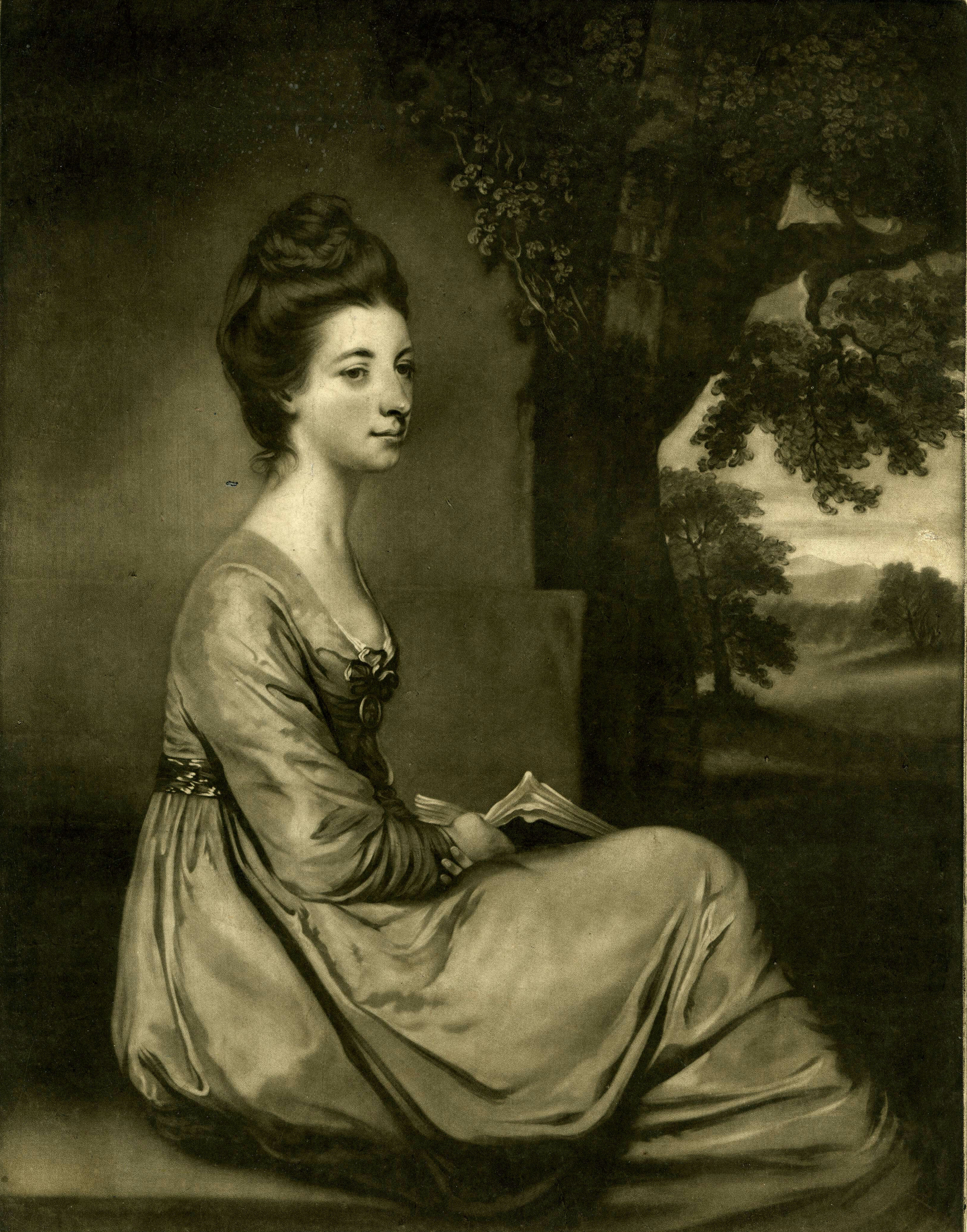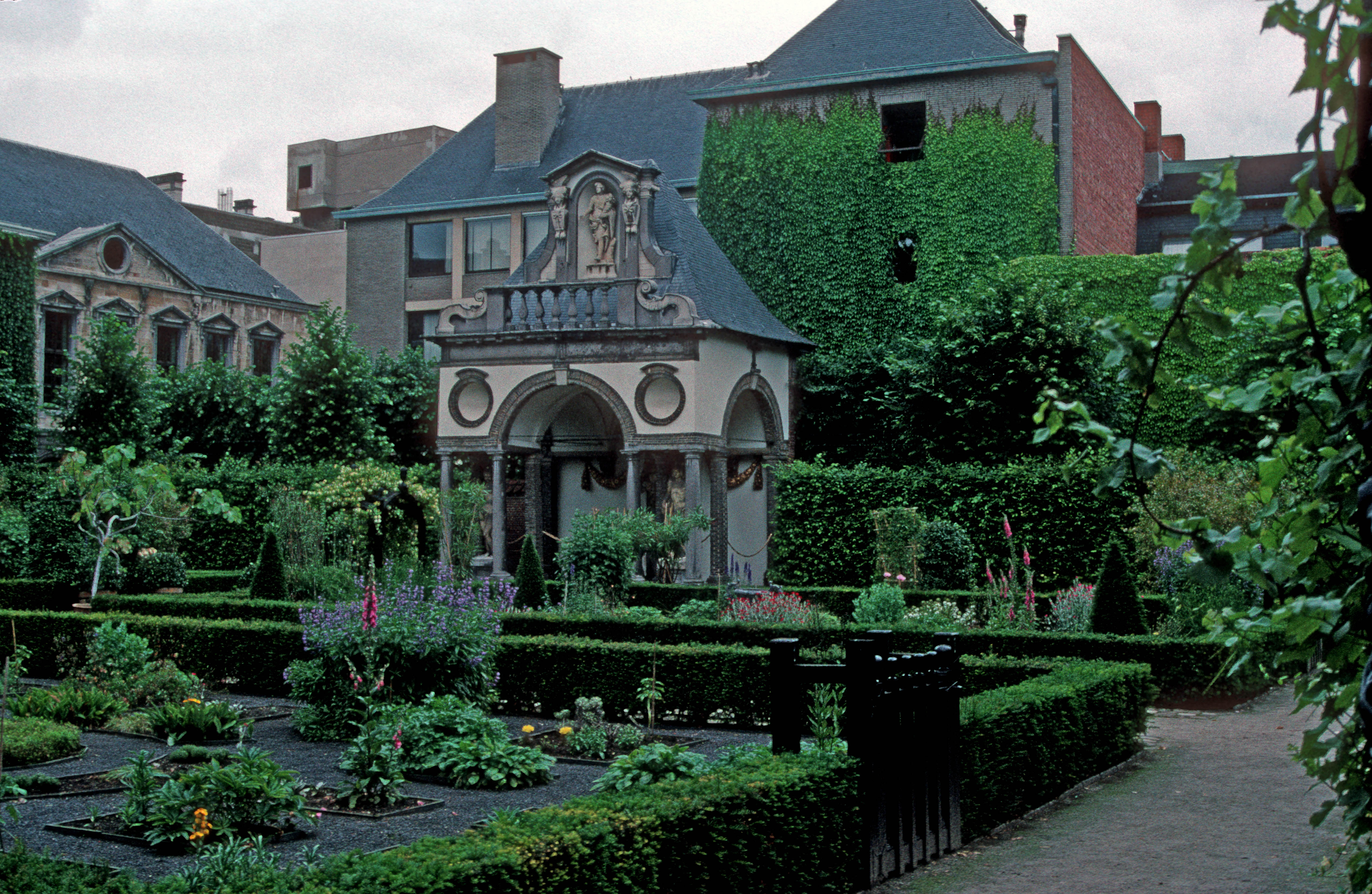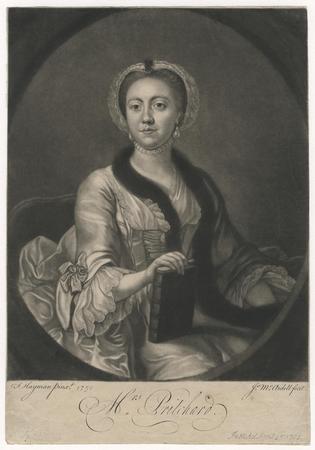|
James Watson (engraver)
James Watson (c. 1739 – 1790) was an Irish engraver. Life He came while young to London, where he is supposed to have been a pupil of James Macardell. He became a leading mezzotint engraver. Watson published some of his works himself at his house in Little Queen Anne Street, Portland Chapel; but the majority were done for Sayer, Boydell, and other printsellers. He exhibited engravings with the Incorporated Society of Artists between 1762 and 1775. Watson died in Fitzroy Street, London, on 20 May 1790. The engraver Caroline Watson (1761?–1814) was his daughter and pupil. Works Watson produced plates from pictures by Joshua Reynolds, Thomas Gainsborough, Francis Cotes, Catherine Read, Anthony van Dyck, Gabriel Metzu, Godfried Schalcken, Peter Paul Rubens Sir Peter Paul Rubens (; ; 28 June 1577 – 30 May 1640) was a Flemish artist and diplomat from the Duchy of Brabant in the Southern Netherlands (modern-day Belgium). He is considered the most influential artist ... [...More Info...] [...Related Items...] OR: [Wikipedia] [Google] [Baidu] |
Anthony Van Dyck
Sir Anthony van Dyck (, many variant spellings; 22 March 1599 – 9 December 1641) was a Brabantian Flemish Baroque artist who became the leading court painter in England after success in the Southern Netherlands and Italy. The seventh child of Frans van Dyck, a wealthy Antwerp silk merchant, Anthony painted from an early age. He was successful as an independent painter in his late teens, and became a master in the Antwerp guild in 1618. By this time he was working in the studio of the leading northern painter of the day, Peter Paul Rubens, who became a major influence on his work. Van Dyck worked in London for some months in 1621, then returned to Flanders for a brief time, before travelling to Italy, where he stayed until 1627, mostly in Genoa. In the late 1620s he completed his greatly admired ''Iconography'' series of portrait etchings, mostly of other artists. He spent five years in Flanders after his return from Italy, and from 1630 was court painter for the ... [...More Info...] [...Related Items...] OR: [Wikipedia] [Google] [Baidu] |
18th-century Engravers
The 18th century lasted from January 1, 1701 ( MDCCI) to December 31, 1800 ( MDCCC). During the 18th century, elements of Enlightenment thinking culminated in the American, French, and Haitian Revolutions. During the century, slave trading and human trafficking expanded across the shores of the Atlantic, while declining in Russia, China, and Korea. Revolutions began to challenge the legitimacy of monarchical and aristocratic power structures, including the structures and beliefs that supported slavery. The Industrial Revolution began during mid-century, leading to radical changes in human society and the environment. Western historians have occasionally defined the 18th century otherwise for the purposes of their work. For example, the "short" 18th century may be defined as 1715–1789, denoting the period of time between the death of Louis XIV of France and the start of the French Revolution, with an emphasis on directly interconnected events. To historians who expand ... [...More Info...] [...Related Items...] OR: [Wikipedia] [Google] [Baidu] |
1790 Deaths
Year 179 ( CLXXIX) was a common year starting on Thursday (link will display the full calendar) of the Julian calendar. At the time, it was known as the Year of the Consulship of Aurelius and Veru (or, less frequently, year 932 ''Ab urbe condita''). The denomination 179 for this year has been used since the early medieval period, when the Anno Domini calendar era became the prevalent method in Europe for naming years. Events By place Roman empire * The Roman fort Castra Regina ("fortress by the Regen river") is built at Regensburg, on the right bank of the Danube in Germany. * Roman legionaries of Legio II ''Adiutrix'' engrave on the rock of the Trenčín Castle (Slovakia) the name of the town ''Laugaritio'', marking the northernmost point of Roman presence in that part of Europe. * Marcus Aurelius drives the Marcomanni over the Danube and reinforces the border. To repopulate and rebuild a devastated Pannonia, Rome allows the first German colonists to enter territory ... [...More Info...] [...Related Items...] OR: [Wikipedia] [Google] [Baidu] |
1739 Births
Events January–March * January 1 – Bouvet Island is discovered by French explorer Jean-Baptiste Charles Bouvet de Lozier, in the South Atlantic Ocean. * January 3: A 7.6 earthquake shakes the Ningxia Hui Autonomous Region in China killing 50,000 people. * February 24 – Battle of Karnal: The army of Iranian ruler Nader Shah defeats the forces of the Mughal emperor of India, Muhammad Shah. * March 20 – Nader Shah occupies Delhi, India and sacks the city, stealing the jewels of the Peacock Throne, including the Koh-i-Noor. April–June * April 7 – English highwayman Dick Turpin is executed by hanging for horse theft. * May 12 – John Wesley lays the foundation stone of the New Room, Bristol in England, the world's first Methodist meeting house. * June 13 – (June 2 Old Style); The Royal Swedish Academy of Sciences is founded in Stockholm, Sweden. July–September * July 9 – The first group purp ... [...More Info...] [...Related Items...] OR: [Wikipedia] [Google] [Baidu] |
Nelly O'Brien
Ellen Lucy or Nelly O'Brien (4 June 1864 – 1 April 1925) was an Irish miniaturist, landscape artist, and Gaelic League activist. Life and family Nelly O'Brien was born Ellen Lucy O'Brien on 4 June 1864, at Cahirmoyle, County Limerick. She was the eldest child Edward William O'Brien and Mary O'Brien (née Spring Rice). Her siblings were Lucy and Dermod, with Dermod also becoming an artist. Her father was a landowner, and her mother was a sculptor and painter and sister of Thomas Spring Rice. O'Brien's grandfather was William Smith O'Brien. Whilst a young child, O'Brien spent two years living on the French Riviera from 1866 to 1868. Her mother later died of tuberculosis, and the three children were raised by their aunt, the writer and nationalist, Charlotte Grace O'Brien. Their father remarried in 1880, to Julia Marshall, with whom he had two sons and two daughters. O'Brien attended school in England from 1879, and later enrolled to study painting at the Slade School of Art. O ... [...More Info...] [...Related Items...] OR: [Wikipedia] [Google] [Baidu] |
Isabella Molyneux, Countess Of Sefton
Isabella Molyneux, Countess of Sefton, formerly Viscountess Molyneux, (née Lady Isabella Stanhope; c. 1748 – 29 January 1819) was a British peeress and society figure. Biography Lady Isabella Stanhope was the second child of William Stanhope, 2nd Earl of Harrington and Lady Caroline FitzRoy, a daughter of Charles FitzRoy, 2nd Duke of Grafton. She was an older sister of Charles Stanhope, 3rd Earl of Harrington. According to the memoirs of Elizabeth Craven, Baroness Craven, Lady Isabella refused the hand of the Duke of Fitz-James. On 27 November 1768 she married Charles Molyneux, 8th Viscount Molyneux, the future 1st Earl of Sefton in the Peerage of Ireland. On 18 September 1772 Lady Sefton gave birth to a son, the future 2nd Earl of Sefton. She was painted by notable painters including Catherine Read and Thomas Gainsborough, and engraved by the artist James Watson. A portrait of her by Gainsborough was unveiled at the inaugural exhibit of the Royal Academy of Art. A po ... [...More Info...] [...Related Items...] OR: [Wikipedia] [Google] [Baidu] |
Peter Paul Rubens
Sir Peter Paul Rubens (; ; 28 June 1577 – 30 May 1640) was a Flemish artist and diplomat from the Duchy of Brabant in the Southern Netherlands (modern-day Belgium). He is considered the most influential artist of the Flemish Baroque tradition. Rubens's highly charged compositions reference erudite aspects of classical and Christian history. His unique and immensely popular Baroque style emphasized movement, colour, and sensuality, which followed the immediate, dramatic artistic style promoted in the Counter-Reformation. Rubens was a painter producing altarpieces, portraits, landscapes, and history paintings of mythological and allegorical subjects. He was also a prolific designer of cartoons for the Flemish tapestry workshops and of frontispieces for the publishers in Antwerp. In addition to running a large workshop in Antwerp that produced paintings popular with nobility and art collectors throughout Europe, Rubens was a classically educated humanist scholar and diplom ... [...More Info...] [...Related Items...] OR: [Wikipedia] [Google] [Baidu] |
Godfried Schalcken
Godfried Schalcken (1643 – 16 November 1706) was a Dutch genre and portrait painter. He was noted for his mastery in reproducing the effect of candlelight, and painted in the exquisite and highly polished manner of the Leiden fijnschilders. Life and work Godfried Schalcken was born in Made, North Brabant, the son of Cornelis Schalcken and Aletta Lydius. Before he was four years old, his family moved to Dordrecht, where his father became rector of the Latin school. Schalcke studied under Samuel van Hoogstraten in Dordrecht before he moved to Leiden, into the studio of Gerard Dou (1613–1675), one of Rembrandt's most famous pupils. His earlier genre pictures very closely resemble Dou's work. He worked in Leiden until c. 1675, then returning to Dordrecht until 1691, after which he settled in The Hague, where he continued to paint until his death, near age 63, in 1706. He also visited England (1692–1697), but his uncouth manners and bad temper alienated him from the society ... [...More Info...] [...Related Items...] OR: [Wikipedia] [Google] [Baidu] |
Gabriel Metzu
In Abrahamic religions (Judaism, Christianity and Islam), Gabriel (); Greek: grc, Γαβριήλ, translit=Gabriḗl, label=none; Latin: ''Gabriel''; Coptic: cop, Ⲅⲁⲃⲣⲓⲏⲗ, translit=Gabriêl, label=none; Amharic: am, ገብርኤል, translit=Gabrəʾel, label=none; arc, ܓ݁ܰܒ݂ܪܺܝܐܝܶܠ, translit=Gaḇrīʾēl; ar, جِبْرِيل, Jibrīl, also ar, جبرائيل, Jibrāʾīl or ''Jabrāʾīl'', group="N" is an archangel with power to announce God's will to men. He is mentioned in the Hebrew Bible, the New Testament, and the Quran. Many Christian traditions — including Anglicanism, Eastern Orthodoxy, and Roman Catholicism — revere Gabriel as a saint. In the Hebrew Bible, Gabriel appears to the prophet Daniel to explain his visions ( Daniel 8:15–26, 9:21–27). The archangel also appears in the Book of Enoch and other ancient Jewish writings not preserved in Hebrew. Alongside the archangel Michael, Gabriel is described as the guardian angel ... [...More Info...] [...Related Items...] OR: [Wikipedia] [Google] [Baidu] |
Catherine Read
Catherine Read (or Katherine) was a Scottish artist. Born in the early 18th century, she is most known for her work as a portrait-painter. She was for some years a fashionable artist in London, working in oils, crayons, and miniature. From 1760 she exhibited almost annually with either the Incorporated Society of Artists, the Free Society of Artist, or the Royal Academy, sending chiefly portraits of ladies and children of the aristocracy, which she painted with much grace and refinement. Early life Read was born in Dundee, Scotland, on 3 February 1723, to Alexander and Elizabeth Read, and one of thirteen children of an affluent Forfarshire family. She received her education from Maurice Quentin De La Tour in Edinburgh. Her mother was the sister of Sir John Wedderburn, 5th Baronet of Blackness, who fought in the Jacobite rising of 1745, and whose daughters were cared for by Read after his execution.Miss Katherine Read, Court Paintress, A. Francis Steuart, ''The Scottish Histor ... [...More Info...] [...Related Items...] OR: [Wikipedia] [Google] [Baidu] |
James Macardell
James MacArdell (1729?–1765) was an Irish mezzotinter. Life He was born in Cow Lane (later Greek Street), Dublin, around 1729. He learnt mezzotint-engraving from John Brooks. When Brooks moved to London in 1746, MacArdell and other pupils followed him. He opened a print shop at the Golden Head in Covent Garden, where in 1753 he published six views of Dublin. MacArdell died on 2 June 1765, in his fifty-seventh year, and was buried in the churchyard at Hampstead, where a stone bore an inscription to his memory. Works His earliest work appears to be a head of Archbishop Hugh Boulter in an engraving, altered from one by Brooks of Bishop Robert Howard. A head of Dr. Birch is stated to have been done by MacArdell in London. A portrait of Bishop Thomas Secker, engraved by MacArdell, was published in London in 1767, and also a humorous plate, entitled 'Teague's Ramble.' In 1748 he engraved a portrait of John Cartwright, after S. Elmer, and a small portrait of Charles Bancks, a Swed ... [...More Info...] [...Related Items...] OR: [Wikipedia] [Google] [Baidu] |





.jpg)

